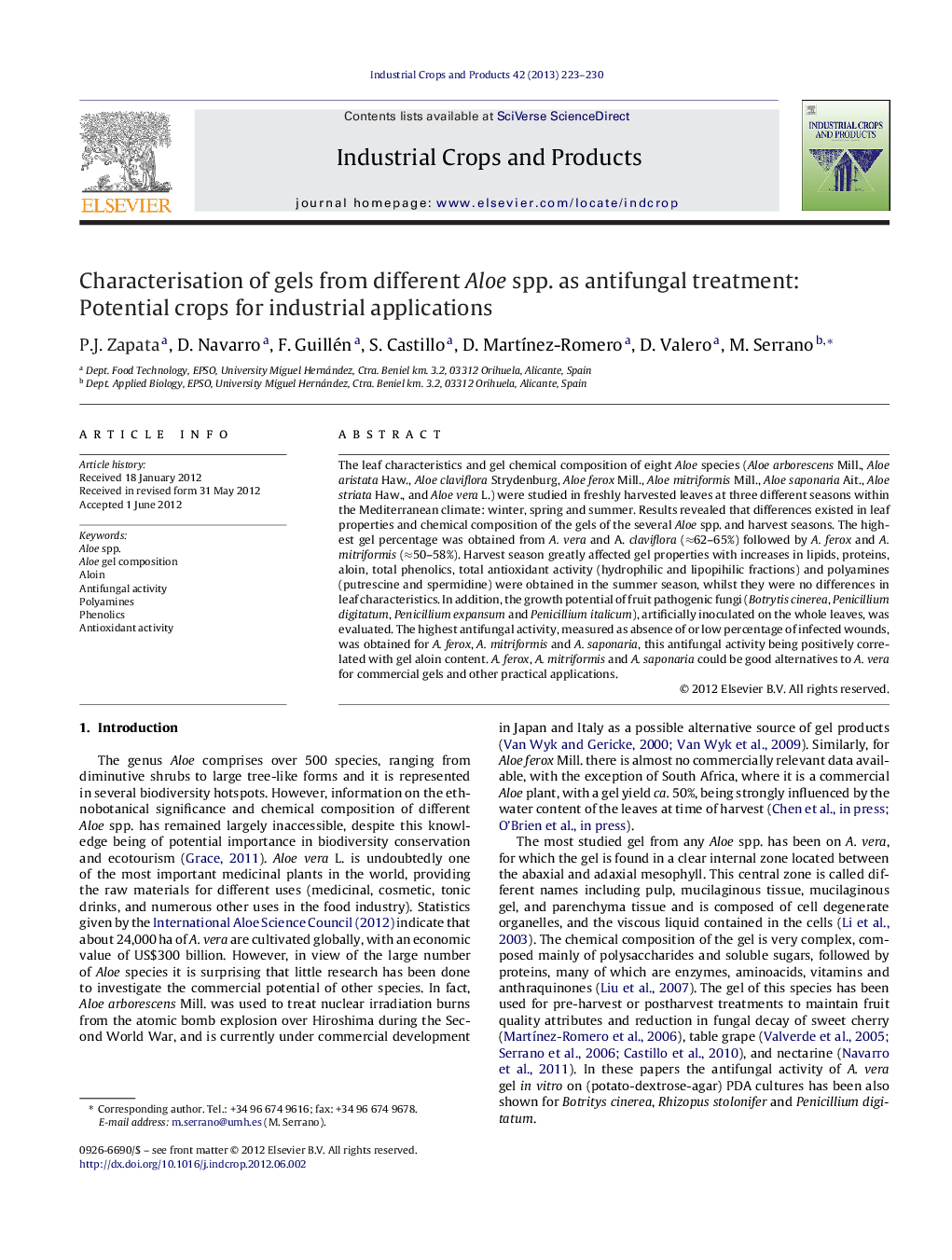| Article ID | Journal | Published Year | Pages | File Type |
|---|---|---|---|---|
| 4513737 | Industrial Crops and Products | 2013 | 8 Pages |
The leaf characteristics and gel chemical composition of eight Aloe species (Aloe arborescens Mill., Aloe aristata Haw., Aloe claviflora Strydenburg, Aloe ferox Mill., Aloe mitriformis Mill., Aloe saponaria Ait., Aloe striata Haw., and Aloe vera L.) were studied in freshly harvested leaves at three different seasons within the Mediterranean climate: winter, spring and summer. Results revealed that differences existed in leaf properties and chemical composition of the gels of the several Aloe spp. and harvest seasons. The highest gel percentage was obtained from A. vera and A. claviflora (≈62–65%) followed by A. ferox and A. mitriformis (≈50–58%). Harvest season greatly affected gel properties with increases in lipids, proteins, aloin, total phenolics, total antioxidant activity (hydrophilic and lipopihilic fractions) and polyamines (putrescine and spermidine) were obtained in the summer season, whilst they were no differences in leaf characteristics. In addition, the growth potential of fruit pathogenic fungi (Botrytis cinerea, Penicillium digitatum, Penicillium expansum and Penicillium italicum), artificially inoculated on the whole leaves, was evaluated. The highest antifungal activity, measured as absence of or low percentage of infected wounds, was obtained for A. ferox, A. mitriformis and A. saponaria, this antifungal activity being positively correlated with gel aloin content. A. ferox, A. mitriformis and A. saponaria could be good alternatives to A. vera for commercial gels and other practical applications.
Graphical abstractFigure optionsDownload full-size imageDownload as PowerPoint slideHighlights► The leaf properties and chemical composition of the 8 Aloe spp were analysed. ► Harvest season influences the gel chemical composition. ► The antifungal activity of the gels differed amongst Aloe spp. ► Antifungal activity of the Aloe gels were correlated to aloin concentration. ► A. ferox, A. mitriformis and A. saponaria could be new crops for commercial gels.
